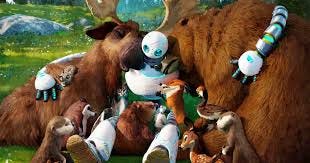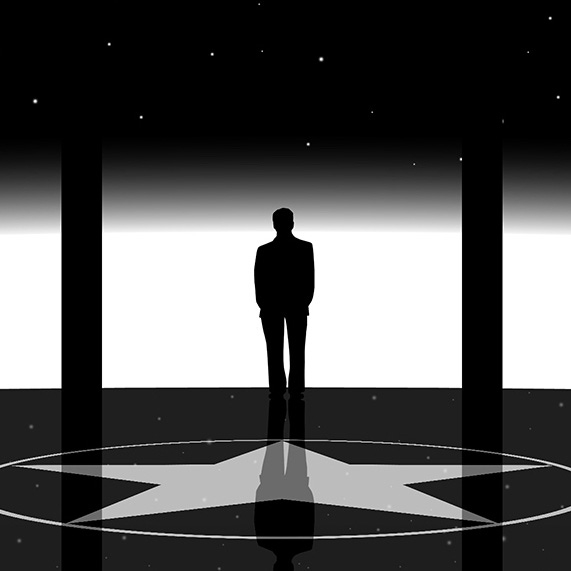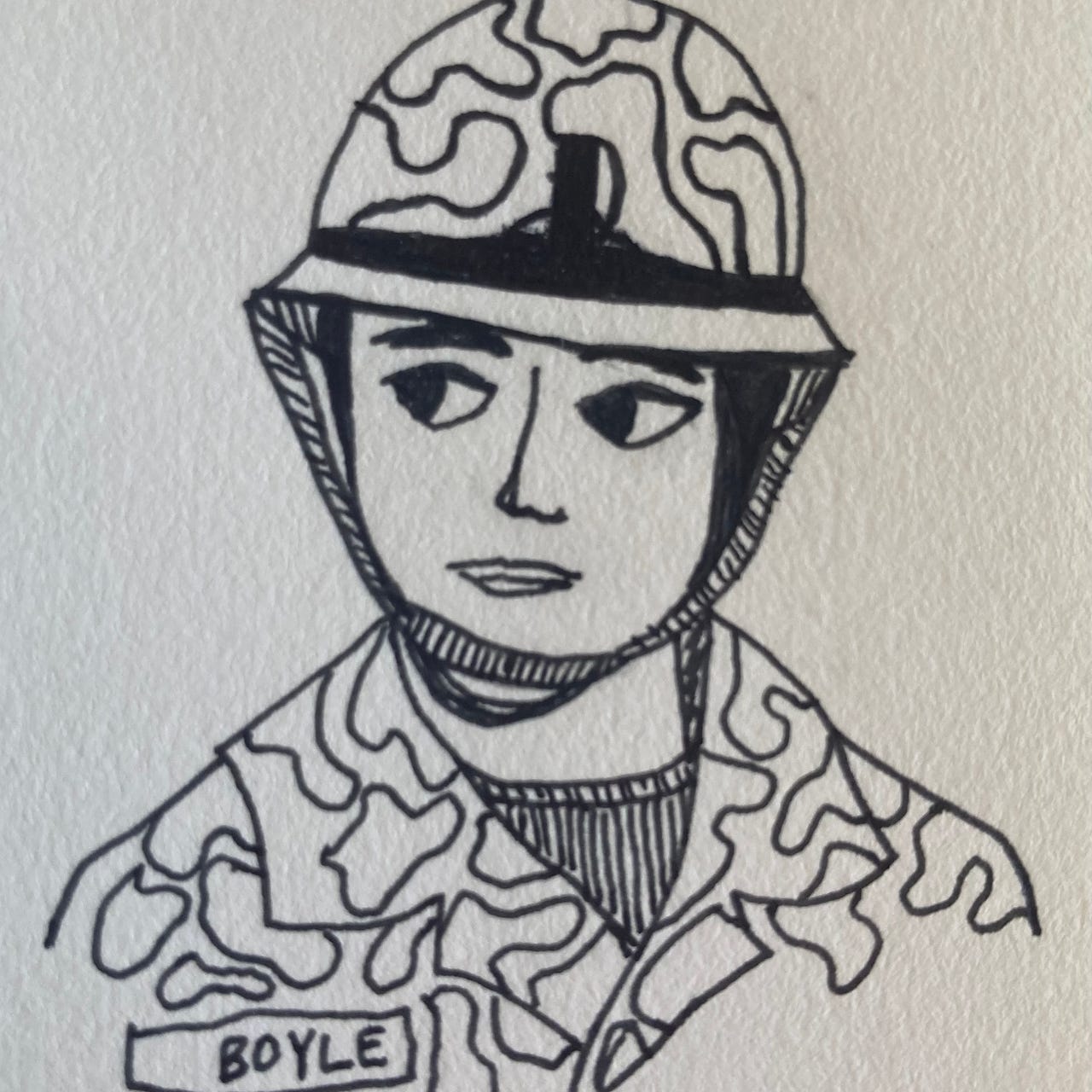I had occasion recently to go see the new movie The Wild Robot. I’ve been out of the going-to-see-kid-movies game for some time now. My kids are all adults. So it was interesting to see what a considerable time-jump would bring in the way of morals / lessons / worldviews being imparted by the film.
Such messages—both intended and unintended—are embedded in all kid-movies.
And while, of course, messages are embedded in films for grownups as well, there’s something higher-stake about the ideas that might pop through a kid-movie. The intended audience is more impressionable. Some might say more defenseless, even vulnerable to those ideas.
So while it’s a blast to go to the movies with your kiddos (our family loves movies and movie-going), it’s also not a bad idea to be taking some mental notes during the film. Just in case you want to undertake a bit of debrief with your kids afterwards, over ice cream maybe to keep the fun rolling.
That First Movie Experience
The first movie we took our oldest child to, our son, was Bambi. I regret that choice to this day. Bambi premiered in 1942. We took our son see it in the late-1980s or early-1990s, when he was four or five. Talk about a jump in world views. The film scared the shit out of the poor little dude. And I don’t blame him. It scared the shit out of me, too.
I hadn’t seen Bambi for ages before taking our guy to see it in a special back-in-theaters event. I’d forgotten completely how terrifying is the hunters-kill-Bambi’s-mother scene. Or the fight scene where adolescent Bambi has to do battle with a rival buck, Ronno, to win the rutting-rights to the flirty doe, Faline. All so Bambi can fulfill his destiny as “The Young Prince of the Forest.” Holy hell. Were they trying to prepare kids for combat against the Axis Powers back then? The clear message coming through is cold-cruel-world fare.
Life’s hard, soldier! Suck it up, fix bayonets, and go get twitterpated!
Not really what we were telling our kids by the later 20th century.
I thought I was being more careful in my selection of the first movie our eldest daughter saw. When she was four or five, I took her to see The Little Mermaid (1989). Jeez, I thought I’d nailed it. A contemporary kid-movie. Girl-forward. Hans Christian Anderson pedigree. What could go wrong?
We got popcorn. She was so excited to be in the big theater in front of the big screen. Very cool. And, yeah, Ursula the Sea-Witch made her clutch my arm a bit. But she handled it fine. Nothing like the wholesale slaughter of Bambi’s Mom. But as I watched this fairy tale unfold so enchantingly on the forty-foot screen—beaming directly into the bright eyes and precious mind of my young daughter—the cultural alarm bells started ringing in my head.
Ariel is a spunky heroine, sure. But a Princess. With Daddy issues. Looking to give her entire life over to being with a Prince Charming. And her nemesis is an Evil Witch—meaning an independent and educated woman.
Sigh.
Fairy tales are the worst.
We had a nice chat over ice-cream at Baskin-Robbins after the movie.
With our third child, our younger daughter, well, as so often happens with a third kiddo, she just got carried along with the crowd to go see her first movie in a theater. She and I think it was The Lion King (1994). But neither of us is sure. An exact memory doesn’t pop into our heads. But no matter. More cultural alarms.
Fantastic comic relief with Timon and Pumbaa. Still, we’re in a monarchical world. That world is still patriarchal. The storyline is still Young Prince-centric. At least the bad guy, Scar, is a guy (with that classic Hollywood bad-guy British accent). But in this tale, more than ever, it’s painfully clear how the women do all the work but the men take all the credit. Nala is the real kick-ass—but she’s not about to be let to rule the Savannah.
After the movie, our youngest daughter got a double-scoop of whatever flavor she wanted.
Messages in The Wild Robot
For me, going to see a kid-movie in a theater after so long a hiatus was a bit like re-enacting that first magical movie experience. I was being introduced to a new era of kid-movie. A new batch of cultural assumptions and messages—intentional and inadvertent—being fed to kids.
I was happy to see so little of the cultural junk littering Bambi, The Little Mermaid, and The Lion King cluttering up The Wild Robot.
In fact, a case can be made that this 2024 kid-movie stands in antithesis to 1942 Bambi. In the middle of the 20th century, Americans seemed perfectly fine with letting kids know that going out to gun down the wildlife was A-OK. Just something that happened. Nothing could be more routine or uninspected. After all, humans own the planet. Ours to do with as we please. What possible consequence even comes to mind?
A quarter of the way into the 21st century, such a mindset is not just heedless but catastrophic.
Similarly, no issues involving Prince/Princess, King/subjects, or patriarchy/witches barge their way into the storyline of The Wild Robot. These social conventions are not really in play in the film. And that’s a promising sign.
Still, this 21st-century kid-movie scared the shit out of me.
Why? Because of the radical absence of humans in the story.
Sure, all the animals (and the robot, for that matter) are anthropomorphized in the film. That’s stock-in-trade for kid-movies. But there’s a qualitative difference between the depiction of animal life in The Wild Robot to that of, say, in The Lion King.
In The Lion King, a human social organization (kingship...what else?) is overlaid wholesale onto the animal kingdom (see what I mean?...as if kings are “natural”). For centuries, such animal allegories have been used as a means of social commentary, their messages ranging from humorous to inspirational to propagandistic to satirical. Any actual characteristics of a particular animal (lion, fox, pig, whatever) are incorporated into the story solely as a way to comment upon human behaviors (brave, sly, slovenly, whatever). The storyteller doesn’t care a fig for rendering authentic animals.
The Wild Robot does concern itself with rendering, to a conspicuous degree, authentic animal behavior. Fink the fox is mercilessly chowing down on any prey he can get his paws on. Thorn the grizzly bear has the run of the island as its top predator. Longneck the goose must organize and lead the seasonal migration of the flock. This kid-movie puts us in the animal realm and asks us to pay attention. It doesn’t—overly much—drag animals into the human realm in order to spark a laugh or endorse a partisan code of some sort.
That’s not to say the animals aren’t made human. They are, of course. But a hornbill isn’t turned into a majordomo or hyenas into henchmen as they are in The Lion King. Instead, a beaver is given voice to express its preoccupation with damming or an opossum its obsession with vulnerability.
Significantly, these animal voices come about as a result of translation, not from the typical poetic license of creatures simply being able to speak English. The robot, Roz, must take the time to study and learn the languages of all the animals on the island before she (yep, a gendered robot) can communicate with them. This is an interesting and telling detail in the film. We, the humans, must go to them, the animals, to understand what’s going on.
Thus, although the movie is unavoidably anthropomorphic in many of its narrative conventions, the story itself is not human-centric.
Where Have All the Humans Gone?
One trademark of kid-movies is the clever insertion of parental-aimed humor. That is, the parents got dragged along to the cinema to endure sitting through a kid-movie, so you need to give them something to laugh at as well. Something, that is, that’s clearly over-the-head of the kids in the audience. (Aladdin might be the best kid-movie of all-time in this department, featuring as it does the patter of Robin Williams as the Genie.)
The Wild Robot provides a bit of such fun, particularly with Pinktail the opossum and her brood. But this parental merriment, I find, is short-lived. After the first third of the film, humor—both that intended for adults and for kids—largely leaves the equation. Taking hold instead is the somber tone of a survival ordeal.
That is, a desperate tale involving only fauna and AI.
Human fingerprints are everywhere evident in the movie. But always in a bad way. Climate disaster. Moronic consumerism. Evil robots. Heartless corporation. Unexplained signals that humanity is under extreme duress.
For example, well into the movie, when the geese have started their migration, the V-formations are shown flying over the Golden Gate Bridge—which is mostly submerged! That would mean that much of the San Francisco Bay area is underwater due to rising ocean levels.
I’ve got to say, I found this little story detail shocking.
The film provides no context, no clarification whatever about this environmental catastrophe. I doubt most kids watching the movie would even pick up on it. The narrative seems to be saying: Well, the geese know nothing about it and sure don’t care, so why should we, the viewer?
Humans look to be an unfortunate thing of the past in the world of The Wild Robot. The future belongs to non-human life. Namely, to animals and robots. For parents sitting in the audience, this message can come across as exceedingly harsh. Far from enjoying a bit of parental-aimed humor in this kid-movie, parents are subjected to a gob-smack of parental-aimed guilt.
I hate to point this out, but a disturbingly available message coming out of this kid-movie is: Hey, you, you smug grownup sitting in the cinema shoving popcorn in your face! Do you realize that you’ve fucked up this planet big-time for your darling child sitting so trustingly next to you!
Yikes.
I’m not sure I remember even seeing a human depicted in the movie. Maybe as a generic figure milling around a greenhouse at a couple of points or a few functionaries sitting in front of screens in a control room somewhere. But certainly not as a fully animated character with speaking lines. A company called Universal Dynamics is the closest thing we get to human agency in The Wild Robot. (Well, I guess that corporations are people, after all.) But even that agency is carried out by AI.
At the end of the film, a malevolent, floaty, tentacled Universal Dynamics robot called Vontra shows up—armed to the teeth—to recollect Roz from the island. Vontra has a pack of robo-thugs with her (again, a gendered AI) to do the dirty work. Roz and animal pals, of course, mount a heroic defense of their island habitat. But in the end Roz is taken back to Universal Dynamics HQ to have her memory wiped and be reset to her original programming as a ridiculous servant robot.
As always happens in kid-movies, though, spunkiness and love prevail. Although back at corporate HQ tending a greenhouse, Roz nonetheless has managed to keep her “self” and memories of her island family of creatures, especially the little goose she raised, Brightbill.
Obviously, there’s a sequel in the offing.
The Inheritors?
Of course there’s a sequel in the offing. The worldwide gross for The Wild Robot (as of 30 October 2024) is over $233,600,000. The movie also is getting rave reviews. Rotten Tomatoes rates it at 98% on both the Tomatometer and the Popcornmeter. Individual reviewers gush about the artistry of the CGI animation (gosh, more AI) and the big emotions delivered by the story.
Natalia Winkelman of The New York Times calls the movie “a dazzling triumph of animation,” adding “this is a work that cares most about two things: big feelings and great beauty.” Similarly, Adrian Horton of The Guardian thinks the film: “Clever, heartfelt and frequently stunning.” For him, “The Wild Robot offers the type of all-ages-welcome animated entertainment that will delight kids and leave a lump in one’s throat.”
Sure. Why not? Such is the basic aim of all kid-movies.
But aren’t we also missing something?
Not only does The Wild Robot not impose a human social order on the animal world, but it positively shunts aside any human social order in favor of giving us an idealized animal realm to contemplate. One, no less, where predators—at least for a while—agree to stop eating their prey. (That’s some serious poetic license there...)
Likewise, the heroes of the film—that is, characters our kids are meant to emulate—are a runt gosling and an advanced appliance. Brightbill supplies the prerequisite pluck and Roz the obligatory emotional growth. Human traits, yes, but delivered to our kids via conspicuously non-human vehicles.
One wonders. Does the film invite our kids to consider being—how even to put this—existential alternatives to themselves? That is, not humans? Is The Wild Robot suggesting that, going forward, existing as a human will not be a particularly strong investment strategy?
Bleak, I know. But the damn Golden Gate Bridge was underwater!
Sorry, but the upshot of this artistically rendered, heartwarming animated story can well be interpreted as a glimpse into the post-human world. As a tale of what will be left—animal species we haven’t managed to drive to extinction and our smart machinery—after we stupid humans have wiped ourselves out.
Shit a brick. Have things come to this? Is this the kind of message we’re willing and sadly able and maybe inevitably forced to tell our kids nowadays? Are we letting them know, in a fun way, that we’re up Shit Creek without a paddle?
Chilling.
And I thought Bambi, The Little Mermaid, and The Lion King were bad.
Ice cream, anyone?
COMING IN TWO WEEKS: the comic stylings of Ali Wong...
AND DON’T FORGET...
Read some provocative fiction. Check out and subscribe to my other Substack newsletter, 2084 Quartet at:
While you’re at it, read some provocative social commentary. Check out and subscribe to this absolute Substack gem as well:







And the day-after-the-election is only the beginning!!!!
I’ll take a caramel fudge sundae with 3 scoops. Day 1.